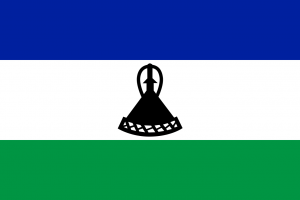Language/Southern-sotho/Vocabulary/Telling-Time
| ◀️ Counting Numbers — Previous Lesson | Next Lesson — Present Tense ▶️ |
Introduction
In this lesson, we will learn how to tell time in Southern Sotho. Telling time is an important skill that will enable you to communicate more effectively with Southern Sotho speakers. We will cover how to express hours, minutes, and various time-related expressions, such as AM and PM.
Vocabulary
Here are some important terms related to telling time that you should know:
| Southern Sotho | Pronunciation | English |
|---|---|---|
| Motsotso wa hora | mo-tso-tso wa ho-ra | Hour hand |
| Motsotso wa ntlha | mo-tso-tso wa nt-(l)a | Minute hand |
| Ka nako e kae? | ka na-ko e ka-e? | What time is it? |
| Ke eletswa ke nako ... | ke e-let-sw(a) ke na-ko... | The time is... |
| Khudu | khu-du | AM |
| Mo motsotsonyane | mo mo-tso-tso-nya-ne | PM |
Telling Time
Expressing Hours
In Southern Sotho, hours are expressed using the 12-hour clock system. Here are some examples:
- 1:00 AM: Ke eletswe ke nako ya feela.
- 3:00 AM: Ke eletswe ke nako ya tharo.
- 12:00 PM: Ke eletswe ke nako ya likoloi.
- 3:00 PM: Ke eletswe ke nako ya tharo ya mo motsotsonyane.
Expressing Minutes
In Southern Sotho, minutes are expressed using the word "mohlako" followed by the number of minutes. Here are some examples:
- 5:15 AM: Ke eletswe ke nako ya le ntle la mohlako wa lima.
- 10:30 AM: Ke eletswe ke nako ya lesome la mohlako wa tharo.
- 2:45 PM: Ke eletswe ke nako ya le ntle la mohlako wa lima le mararo.
Expressing AM and PM
In Southern Sotho, AM is expressed as "khudu" while PM is expressed as "mo motsotsonyane". Here are some examples:
- 8:00 AM: Ke eletswe ke nako e khudu ya tsebo.
- 4:30 PM: Ke eletswe ke nako ya lesome la mohlako wa pedi mo motsotsonyane.
Asking for the Time
To ask for the time in Southern Sotho, use the expression "Ka nako e kae?". Here are some examples:
- What time is it? Ka nako e kae?
- Excuse me, do you have the time? Kea leboha, na u nkaraba nako?
Practice
Use the following exercises to practice telling time in Southern Sotho:
Exercise 1
Translate the following times into Southern Sotho:
- 8:15 AM:
- 2:30 PM:
- 9:45 AM:
Answers:
- 8:15 AM: Ke eletswe ke nako e khudu ya le ntle la mohlako wa thema le lima.
- 2:30 PM: Ke eletswe ke nako ya lesome la mohlako wa bohlokoa mo motsotsonyane.
- 9:45 AM: Ke eletswe ke nako e khudu ya le ntle la mohlako wa tsenya la mararo.
Exercise 2
Translate the following expressions into Southern Sotho:
- It's 12:00 PM:
- It's 7:30 AM:
- It's 10:15 PM:
Answers:
- It's 12:00 PM: Ke eletswe ke nako ya likoloi.
- It's 7:30 AM: Ke eletswe ke nako e khudu ya le ntle la mohlako wa supa le mararo.
- It's 10:15 PM: Ke eletswe ke nako ya le ntle la mohlako wa lesome la mararo mo motsotsonyane.
Cultural Insight
In Southern Sotho culture, time is not always perceived as a linear concept. Events and occurrences are viewed in relation to family, community, and the natural world, rather than a strict schedule. Understanding this perspective can help build stronger cultural connections with Southern Sotho speakers.
Conclusion
Congratulations! You have learned how to tell time in Southern Sotho. Practice telling time in everyday situations and don't be afraid to ask for the time when you need it. In the next lesson, we will learn about Southern Sotho verbs and tenses.
Other Lessons
- Eating Habits
- Introducing Oneself
- Animals
- Counting Numbers
- Modes of Transportation
- Clothes
- How to say Good Bye?
- Education
- Common Foods
| ◀️ Counting Numbers — Previous Lesson | Next Lesson — Present Tense ▶️ |

